On a recent trip to Long Island in The Bahamas, we observed the heartbreaking amount of plastic waste on local beaches. Our coral reef team found an overwhelming amount of everyday items, like shampoo bottles, medications, and kitchen utensils scattered in the sand.

The stark reality is that most of this trash is not from Long Island. The vast majority of it likely originated from outside of The Bahamas (many had labels in Spanish and French). Indeed, plastic containers, rope, and bottles are known to travel thousands of miles via ocean currents and eventually wash up on beaches all around the world.
“One of the saddest parts is thinking about all of the microplastics that are left behind in the ocean while these containers travel here”, said Dr. Valeria Pizarro, senior coral reef scientist at PIMS.
When plastic waste travels across the globe, it’s broken down by ocean currents, waves, sunlight and chemical reactions, thus creating microplastics. Microplastics can easily be mistaken by fish and other sea life as food. These plastic particles are toxic for sea animals, they can injure their digestive tract and stomach, and can cause animals to starve to death. Microplastics have even been found inside of coral polyps and stuck to their tentacles.

In less than three minutes, our staff collected a conglomerate of something that we all can relate to: shoes and their soles. “Seeing so many soles of shoes on the beach really made me think about my own items, the materials that they are made of, and how long they will exist in this world”, said Meghyn Fountain, a research assistant at the Perry Institute. “I feel even more motivated to practice minimalism, to buy second-hand, and to invest in fixing things when they break instead of buying anew.”

These items stick around. Shoes, for example, take 25-40 years to degrade and rubber soles take 50-80 years break down. Monofilament fishing line, on the other hand, can take 600 years, and plastic bags can take up to 1000 years.
Why the range of time? In different environments, items break down at different rates. Some materials may break down faster in the ocean, and others may not degrade at all. The rate is dependent on the exposure to sunlight, the presence or absence of microorganisms, the amount of oxygen, temperature, and more.
The bottom line is that the world’s ocean connects all of us. And this means that the scope of each and everyone’s impact is great. So, how can you help?
· Limit your use of single-use plastics. This can be as simple as bringing reusable shopping bags to the grocery store and always leaving the house with a reusable water bottle or coffee mug.
· Think LNT (Leave No Trace). Whether heading to the beach or going out for a walk, always be sure to pack up what you bring.
· Dispose to waste properly and always recycle when possible!
· Organize a beach or park clean-up day in your community.
· Each time you buy something, think about the journey that it took to get to you and how this journey will continue when it leaves you.

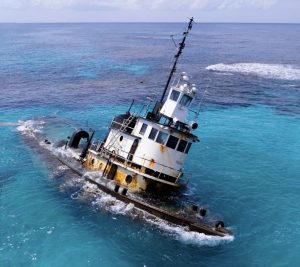
A Year Later, Stranded Tug and Barge Still Scars Reef in Fowl Cays National Park–Residents Demand Accountability
A haunting aerial view of the grounded tug and barge in Fowl Cays National Park—still embedded in coral a year later, a stark reminder of the cost of inaction. Photo
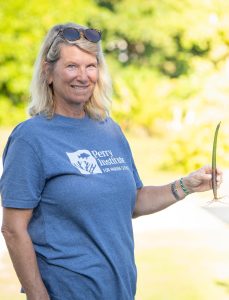
Women Leading Mangrove Restoration in The Bahamas
Have you ever wondered who’s behind the scenes saving our environment, right in our own backyard? Picture a group of energetic, determined women rolling up their sleeves and diving into
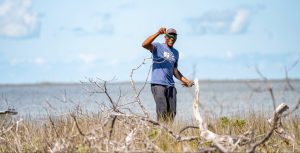
Rewilding the Marls of Abaco: PIMS Plants 100,000 Mangroves and Counting in 2024
As the afternoon sun bathes the Marls of Abaco in golden light, Bahamian boat captain Willis Levarity–locally known as “Captain to the Stars”–stands ankle-deep in soft, warm mud. A broad
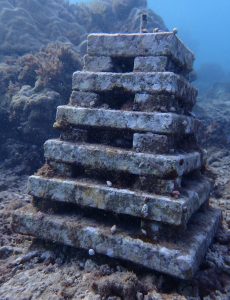
Unveiling Coral Reef Biodiversity: Insights from ARMS Monitoring Structures
An ARM teeming with new coral recruits and a diversity of marine life, highlighting reef recovery and biodiversity Understanding Coral Reef Biodiversity Most new PhDs in the natural sciences move
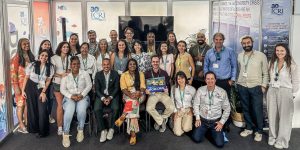
7 Key Takeaways from COP16: Confronting Coral Reef Challenges in a Changing Climate
United #ForCoral: Experts, advocates, and leaders from across the globe join forces at COP16 for the #ForCoral conference, hosted by the International Coral Reef Initiative. Together, they’re driving urgent action
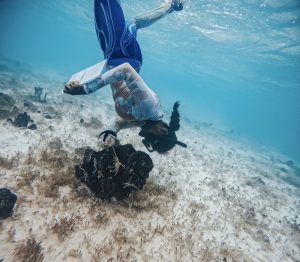
Fieldwork Wrap-Up: Strengthening MPA Management in The Bahamas
Marine protected areas (MPAs) are critical tools in the conservation of marine species and habitats, safeguarding reefs, seagrasses, and mangroves that provide vital ecosystem services to coastal communities. At the



